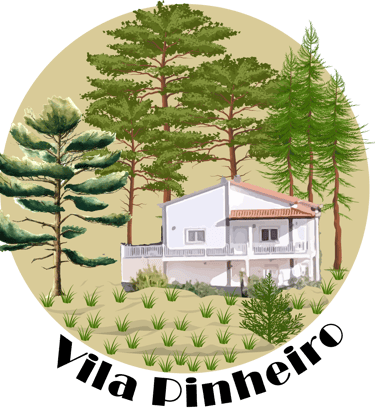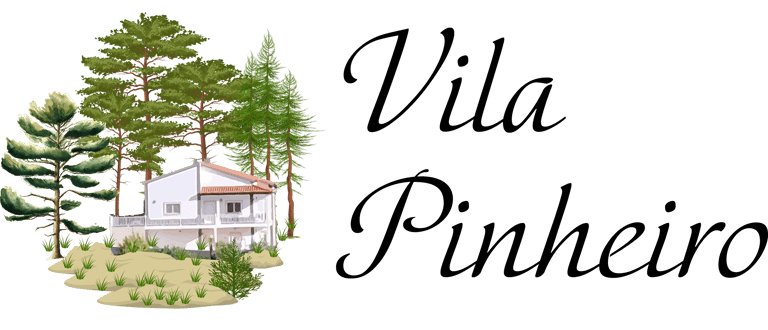About Vila Pinheiro
Nestled in the rolling landscapes of the Oeste Region, Vila Pinheiro isn’t just a place, it’s a story. A story of centuries-old religion, farming innovation and resilient soil. Let me take you on a journey through its layered past, shining a light on the influence of Óbidos Monastery, the Order of Malta, the famed Pêra Rocha pear and the life-giving earth beneath our feet.


Roots in Monastery and Monks
The lands around Vila Pinheiro once lay within the ecclesiastical orbit of Óbidos Monastery, founded in the 12th century. As a stronghold of monastic agriculture, it managed groves, vineyards and olive orchards, employing and teaching lay farmers in the techniques of irrigation, crop rotation, and grafting. With its strategic position on the route from Lisbon northwards, Óbidos’ clerics regularly sent wine, honey and grains into the monasteries’ self-sustaining economy. The monastery's landholdings ensured that Vila Pinheiro's fields were cultivated not just for survival but with purpose and purposefulness.
Knights, Hospices and Handover
By the late Middle Ages, much of this agrarian stewardship was transferred to religious-military orders—particularly the Hospitallers, later known as the Order of Malta. Officially confirmed by the Portuguese crown in the 1190s, they administered estates in and around Óbidos. More than warriors, the Hospitallers maintained hospitals and farms, delivering care and sustenance in equal measure. Their communal model preserved the knowledge of orchard grafting, beekeeping and cereal production. Only after the separation of Church and State in 1920 did these monastic and knightly land practices end, yet their imprint on patterns of parcel division, terracing, and crop selection endures.
The Land Itself - Soil that Sings
Beneath the fruit trees and vineyards lies a prized local treasure: Eutric Cambisols. These soils, derived from mixed granitic and sedimentary parent material, are moderately deep, well-drained and fertile, renowned across temperate climates for their agricultural potential. Characterised by a soft brown A‑horizon and mild structure development, they retain nutrients yet gently leach excess salts, making them perfectly suited to Pêra Rocha pears, vines, cereals and citrus.
Add seasonally wet gleyic variants at valley bases, and you find a patchwork of soil conditions that encouraged historical polyculture—orchards above, vegetables and fodder crops below, with woodlots and pastures on drier slopes. In short, Vila Pinheiro’s soil is both productive and purposeful, a specialist's delight yet resilient to use—ideal for regenerative systems.
Agrarian Heritage & Pêra Rocha
This region is globally synonymous with the Pêra Rocha, a russet-dappled pear bred in the 19th century near Bombarral. The combination of Cambisol soil, mild Atlantic climate and careful grafting by monastic and knightly farmers created the perfect environment for its rise. Today, this PDO-protected fruit remains a major cultural and economic ambassador. Small estates around Vila Pinheiro still maintain heirloom trees—ideal subjects for agroecology tourism, orchard grafting workshops or small-batch pear brandies.
Regional Echoes in Landscape & Culture
Over time, Vila Pinheiro wove together elements that define the larger Oeste Region:
Coastal Energy & Inland Calm
Though a short drive from surf‑famous Nazaré and Peniche, Vila Pinheiro offers the quiet strength of the hinterland, a perfect counterpoint to the Atlantic roar.Fruit Orchards & Crop Diversity
Traditional pear, grape and citrus plantings reflect the region’s agrarian identity, firmly rooted in both monastery and lay stewardship.Ceramics & Culture
Just a hop from Caldas da Rainha—home to Bordallo Pinheiro ceramics—Vila Pinheiro’s built heritage echoes handcrafted terracotta walls, natural lime finishes and rustic architecture.Thermal Heritage & Healing
Echoing Caldas’s 15th-century queen‑founded spa tradition, Vila Pinheiro’s fertile soils and forest patches offer a natural wellness landscape—perfect for forest‑therapy niches.Innovation on Old Soil
The traditional crop mix—orchard, orchard-floor vegetables, bees—offers a living lab for permaculture and regenerative practice. Farm design may evolve, but soil remains constant.Local Liquors & Cottage Industry
While Ginja de Óbidos is locally celebrated, similarly small-batch pear liqueurs or nectars could be an easy, sustainable extension from orchard yield.Biodiversity & Woodland Corridors
Montados, woodland copses and hedgerows reflect centuries-old land management, preserving wildlife corridors and native wildflowers—key for agroecology and heritage farming.
In Summary…
Vila Pinheiro tells a story of land shaped by beliefs, by knights, by fruit and by soil. Its Cambisols underpin the productivity that made the region famous for Pêra Rocha. Its medieval custodians, Óbidos Monastery, the Hospitallers, left an enduring imprint in landscape design, water management, and agricultural diversity. With the secular reforms of 1920 the stewardship model changed, but the long lines of terracing, orchard species and field structure remain.
In essence, the place is not merely "old farmland", it's a living chronicle from Roman-era vineyards to medieval monastery fields, crusading knights’ hospices, and modern regenerative agrarian enterprise. Its heritage lies not just in what was grown, but in how, and by whom, and in the rich earth that sustained it all.
About Us: Mark & Rosalind D'Cruz
We’re Mark and Roz D'Cruz—partners in life and regeneration.
After long careers—Mark in technology, education, and bonsai; Roz in banking, law, and government—we chose to dedicate our next chapter to something deeply meaningful: Vila Pinheiro.
Set in Central Portugal, Vila Pinheiro reflects our shared vision for a regenerative life. It blends our passions for ecological restoration, bonsai, and community learning into a living, evolving landscape.
This is more than a homestead—it’s our way of giving back, growing forward, and living in harmony with nature


Regenerative Practices
Stewards of Vila Pinheiro –
A Regenerative Life Together
Our Location
Vila Pinheiro is nestled in a serene environment, promoting regenerative living and community engagement through regenerative practices and ancient wisdom.
Address
Rua Projetada a Dona Maria II No. 9
Bairradas, 2500-532, Landal,
Caldas da Rainha
Portugal.
Vila Pinheiro beautifully blends sustainability and community, inspiring a harmonious connection with nature and ancient wisdom.
Alex Green


★★★★★
